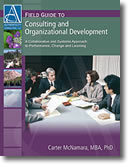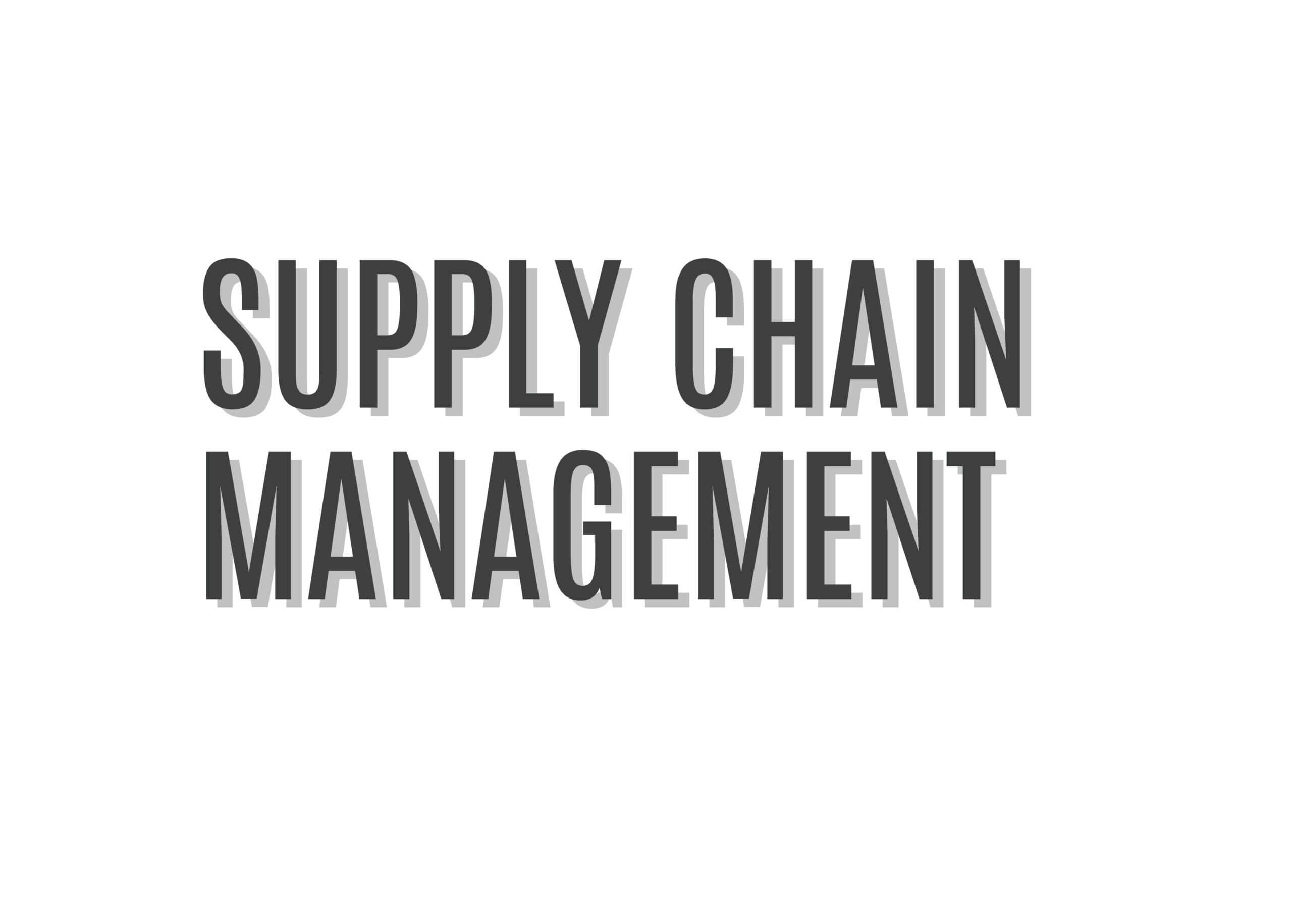All About Nonprofit Fundraising – Guidelines and Resources
This topic in the Library will help nonprofit leaders and staff learn to understand the various/varied elements of fundraising, to recognize the importance of the relationship between an organization
and its potential donors, and to construct and implement a strong fundraising plan/program for their nonprofits. In addition, much of the subject matter in this topic will help nonprofit leaders and staff recognize what it is that they don’t know about fundraising, and how to remedy that situation.
Be sure to also see the following blogs and the many posts published in the blogs:
Library’s Fundraising Blog and Nonprofits.
Sections of This Topic Include
Additional Resources
Also consider
Related Library Topics
Fundraising Basics – Sources and Responsibilities
Typical Funding Sources and Advantages and Disadvantages of Each
(Credit to Ellen M. Hatfield of the Twin Cities in Minnesota)
|
Source
|
Advantages
|
Disadvantages
|
| Individuals |
· Largest source of giving
· Ongoing source one can build
· Once a giver, also an advocate
· Volunteers are a good source of money |
· Costly to develop, small return per individual unit
· Hard to generate unless broad-based direct service appeal· Risky for the inexperienced
· Need significant assistance from the organization’s board and volunteers |
| Large-Family Foundations |
· Source of large sums of money
· Accessible, professional staff
· Clear guidelines, process
· Most likely to research your request
· Board volunteers can help, not always key |
· Start-up funds only
· Lengthy process
· More difficult to access through personal influence· Proposals may be more lengthy |
| Community Foundations |
· Much like large-family foundations
· Staff may be sufficient |
· Host of foundations within foundations
· Most money is earmarked, special funds |
| Small-Family Foundations |
· May fund ongoing operating expenses
· Personal influence with board members helps
· Guidelines often broad
· Not very fussy about grant format |
· Hard to access, no professional
staff
· Often not large sums of money
· Without personal influence, may not be possible |
Large Corporations / Corporate
Foundations |
· Can be source of large sums of money
· Smaller amounts of money may be ongoing
· Often accessible, professional staff
· May be tied to volunteer involvement
· Business strategy may be clear
· Source of cause-related marketing |
· Large sums of money aren’t ongoing
· Hard to get around staff
· Must be within their guidelines
· Not likely to contribute if not headquartered locally or have a public consumer base
· Often want board representation |
| Small Corporations |
· Very informal approach
· Money may be ongoing
· Personal connections will suffice
· Neighborhood focus will help |
· Small amounts of money
· Narrow range of interest
· Personal contacts are key |
Federated Funds (United Ways,
United Arts, Combined Health Appeal) |
· Steady source of relatively large sums of money
· Clear process
· Professional staff, can be agency staff driven |
· Generally can’t be a start-up
organization
· Must be social service and fit priority focus
· Very lengthy entry process
· Very time consuming as must be part of yearly fund raising process, with periodic in-depth review |
| Government |
· Large sums of money possible
· Process is set, clear
· Political clout helps
· May be source of ongoing money |
· Application procedures may be long, tedious
· May only pay by unit of service, fluctuates
· Unspent monies may be returned
· Difficult record keeping |
| Churches and Organizations |
· Often looking for group projects |
· In-kind services most likely
· Need to fit their service focus, neighborhood or religious outlook |
Who is Responsible for Fundraising in a Nonprofit?
by Hank Lewis
A Reader Wrote: “I have been looking around your web site/blog trying to find information about the role of employees in fundraising for an NPO. I see some information about the role of board members and volunteers, but I seem unable to find anything specific about employees….”.
It’s a “given” in the fundraising world that: “Everyone at a nonprofit has an impact on the organization’s ability to raise money” … even though not everyone is involved in “Asking.”
Although someone else might have the title, the CEO is also the chief development officer. S/he is the chief advocate for the organization and its mission, and should be the most knowledgeable person about how the NPO is pursuing that mission. S/he is the public face of the NPO, with the most credibility.
The CEO is (and should often be) involved in many of the major solicitations, either alone or with someone who is better suited to do the “Ask.”
Board Members, ideally, should all give to the best of their ability and should be involved in the process of identifying, cultivating and soliciting (other) major donors — but, they aren’t always wealthy, and they
don’t always have wealthy friends.
I refer to “Volunteer Leaders” as the people most involved with the identification, cultivation, evaluation and solicitation of major donors. They don’t have to be board members, but they must be committed
to raising (or helping raise) the needed funds.
Staff members fall into three categories: (1) Those who actually work at advancing and supporting the NPO’s development/fundraising efforts; (2) Administrative and support staff; and, (3) The program staffers who design and deliver the NPO’s services.
In the context of this posting, nothing needs be said about group #1.
The group #2 people have occasional contact with (prospective) donors, and how they treat those folks creates an impression that can/will impact the likelihood of giving.
The folks in group #3 have the most experience with advancing the mission. They design and implement the NPO’s programs, and they know the people being served. They are the best people to be describing how the donor’s money has or will impact people’s lives.
These folks don’t have to be involved in “Asking,” but they should be involved in the process of cultivating/educating prospective and current donors … ‘cause nobody can tell the story the way they can.
One more thought: Everybody should pass on to the development staff any (non-confidential) information they have that might help identify, cultivate, evaluate or solicit (potential) donors.
I hope I answered the reader’s question. If not, let me know.
Fundraising for New Nonprofits
by Hank Lewis
An email asked: “What advice is there for new nonprofits without a funding history? So many groups with a lot of potential just don’t know where to begin.”
The biggest mistake most new NPOs make is the assumption/belief that, because they want to do wonderful things, everyone (read: gov’t, corporations, foundations and “rich people”) will want to give them money.
The fact is that an NPO must prove itself — prove it can do what it says it can, prove it can be fiscally responsible, prove it is actually needed — before gov’t, corps and fndns will be willing to invest in it.
Of course (he says with tongue-in-cheek), that leaves rich people, and all new NPOs think that Bill Gates is going to send them a check — all they’ll have to do is write him a letter, then watch the mail.
Hey, don’t hold your breath on that one.
A major factor for getting money from rich people is having access to those people. If you have personal relationships with the wealthy, then it’ll be easy for you to pick up the phone and make an appointment to go see your “friend” and ask for that big check. The same if you know someone who has those connections and can/will do that for you.
Failing all that, it comes down to the hard realization that, if you don’t know someone with an “in,” you must rely on the tried and true methods for obtaining that initial funding.
If you can’t rely on outsiders (the gov’t, corps, fndns and the wealthy), it’s up to the insiders to make it happen.
For each new non-profit, the specifics may be different, but the general circumstances are pretty much the same. There must be an understanding that if the people who created the new organization can’t/won’t give of their own resources (to the extent they can) then why would anyone else want to … why should anyone else?
Once that is understood, the founders of that new NPO must take an inventory — who of the people that they know might come to care (as much as you do) about the reasons why the NPO was created … and eventually want to support that organization.
There must also be an evaluation of how those founders and the people with whom they have relationships can begin to make a difference. This step is often best accomplished with some expert guidance.
Many new NPOs bring in someone to speak with their leadership, to educate them as to the processes and procedures that are, typically, most effective, and to help them determine what might be most effective for them. Founders of many new NPOs also attend seminars/workshops designed to educate new NPO leaders.
Bottom line for a new NPO is — to paraphrase, “Only when you’ve helped yourself will others be willing to help you.” PROVE you’re worthy, and future funding will be a lot more likely.
Numerous Additional Resources About Basics of Fundraising
Fundraising Laws and Ethics
Laws
Ethics
Also consider
Business Ethics
Fundraising Leadership: Committees, Board and Other Volunteers
Role of the Nonprofit Board Fundraising Committee
One of the biggest misconceptions about the Fundraising Committee is that its members are to do the fundraising for the nonprofit. No, the job of the Fundraising Committee is to ensure that the fundraising is done very well. The actual fundraising should be done by all Board members, with various staff members supporting those Board members.
What’s the Primary Role of Any Board Committee?
The role of any Board Committee is, at a minimum, to ensure “best practices” in the activities, or the function, that the committee is assigned to. Just like people need to do certain things to stay healthy (such as eat, sleep and exercise), organizations need to do certain activities, too. Many people might refer to those activities as “best practices.” (There are many strong feelings about whether “best practices” even exist, but most people would assert that the phrase has more usefulness than not.)
When recurring crises occur, it’s usually because people are attending only to what’s urgent and not to what’s important. Best practices ensure that the most important activities are done. So Board committees should ensure “best practices” are implemented in the major functions in an organization, for example, in Board operations, planning, marketing, staffing, finances and (in the case of nonprofits) fundraising.
What’s the Primary Role of a Fundraising Committee? What Are Its Ongoing Responsibilities?
Notice the nature of the following activities — how they are not focused on very near-term, detailed tasks for Committee members to raise money. The following responsibilities should be included on a work plan for a Fundraising Committee. Notice that the activities are recurring — they should be done on an ongoing basis.
1. Ensure there’s a specific fundraising target
How much money needs to be raised? Usually the amount is the difference between expected revenues and expenses. Usually those revenues and expenses are identified during strategic or program planning.
2. Ensure prospect research occurs to identify how much money might be raised from different types of resources
Good prospect research will look at the nature of the nonprofit’s services and its locale, and identify similar nonprofits and the sources of funding used by them. For example, similar nonprofits might have raised 50% of funds from individuals, 20% from government contracts, 20% from grants and 10% from fees. That profile suggests the mix that the nonprofit might aim for. Good prospect research will go beyond searching a database of foundations to submit proposals to.
3. identify specific, potential sources of funds from a diverse mix of sources
Now the nonprofit is ready to start selecting specific sources of funds from individuals, foundations, government and/or fees. These activities should result in the names of specific sources, for example, names of people, foundations and government agencies, and/or the specific amounts of fees to charge for certain services. (The amounts of fees to charge might be recommended by, for example, a Marketing Committee.)
4. Develop an action plan about who is going to approach what source, how and by when
This responsibility includes identifying which Board members will approach what source, along with what staff members will support those Board members. All Board members should have assignments, not just the members of the Fundraising Committee.
5. Compile the results of items 1, 2, 3 and 4 into a Fundraising Plan that is approved by the Board
The Plan should include more than merely a listing of what foundations to approach. The Plan becomes the roadmap for generating sufficient revenue. It should include realistic expectations from a diversity of sources, and justify how those sources were identified. It should include an action plan (from step 4) that the Fundraising Committee ensures is implemented on a timely basis.
6. Ensure effective administrative systems to track grants and donations
As funding comes into the nonprofit, its various sources and amounts must be closely and accurately documented. Acknowledgements and receipts must be provided back to donors. Grant requirements must be monitored to ensure they are met. In the United States, fundraising information must be included on the IRS Form 990.
Summary — Job of the Fundraising Committee is to Ensure Planful, Strategic Fundraising
So, again, notice that the job of the Committee is NOT to just ask the Executive Director to provide a list of foundations to write grants to. It’s much more strategic than that. And its responsibilities are recurring — Committee members should never say they don’t have anything to do. Members of the Fundraising
Committee should not be picked because they are “big names” or “big pockets.” Popular and rich people rarely want to serve on Fundraising Committees. Many times, they’d rather write a check, than be expected to attend monthly meetings. And foundation officers see right through the “game” of listing big names on a list of Board members. Instead, select members who know how to think strategically, develop a plan and ensure that the plan is implemented.
Numerous Additional Resources About Basics of Fundraising Leadership
Also consider
Development Staff: Director of Development and Other Staff
Does Your Organization Need a Director of Development?
by Hank Lewis
I initially wrote this piece with the idea in mind that many NPOs don’t need DODs, but my wife read it and said I was totally wrong. So, the following is sort of a collaboration … actually, I won’t publish anything she doesn’t approve !!
Ideally, from day one, an organization should have someone who knows/understands the NPO, its mission, its leadership and its hopes and aspirations. This person should have the experience and skills to help the NPO plan for next week and next year.
This person should have input at all levels, should be able to guide/train the board members and the CEO, and should be able to bring to staff an awareness and understanding of how they affect the development process.
A large organization, with a large development staff, must have someone to coordinate the various programs and be sure that they support, not conflict with or duplicate each other. Sadly, the vast majority of new/nascent NPOs don’t have the money to hire a person with the requisite experience and capabilities.
Smaller organizations that live on grants, need a grants officer. If much of a NPO’s income is from events, then an event coordinator is needed. If one person can do both, all the better.
To hire a staff person to focus on one or two activities, and give that person the title of Director of Development, is to lie to that person, to that person’s next employer and to the board and staff of the NPO doing the hiring.
Hiring a person and giving them the title doesn’t mean that you’re actually getting all the experience/expertise that comes with a real director of development.
A DOD is a critical hire for an organization. The right person can greatly help ensure an organization’s future….
Numerous Additional Resources About Development Staff
Also consider
Fundraising Method: Direct Appeals
Direct Mail Donor Retention
by Jonathan Howard
You know that the key to net gains and year-to-year growth of your direct mail fundraising lies with your donor retention rate. Helping first time donors become loyal friends can generate as much as an 80 percent return on investment.
That’s a pretty great business model. But few nonprofits get it right. Here are some key reasons why American philanthropy’s donor retention stinks.
Stingy thank-yous. I just sent you money to change kids lives or save the world. Now I want swift assurance that my money is making that important difference. Instead, I get a form letter back, focused on the tax-deductibility of my gift from some mid-level employee in the development office. Often these aren’t even personally signed.
Awkward introductions. I’ve just taken one step into your world. Are you going let me know you’re happy to see me, bring me up to speed on your work and dreams and introduce me to other people I’d find interesting? That’s the job of the friendly welcome package that donors … the “package” they should get within two weeks of their gift. But generally don’t.
News I can’t use. My donation is not a license to bore me with “news” about your meetings and big shots, or just as bad, to give me no news at all. I want to know how you help me be more like the person I want to be: compassionate, effective, wise. Donor communications should be all about the donor, not the
organization. The word “you” should appear in every item.
Ineffective asks. Some nonprofits fail at mail because they don’t ask for repeat contributions soon enough or often enough. Others fail because they treat donors like automatic teller machines. Both groups fail because they don’t offer donors good reasons to give again. It’s not “mail” that donors dislike – it’s the lack of sincere respect and regard for them that turns donors off.
The answer isn’t turning off the mail. The answer is using mail to build an honest relationship of head and heart with your recent donors.
Numerous Additional Resources About Direct Appeals
Fundraising Method: Grants — Foundation and Corporate
(adsbygoogle = window.adsbygoogle || []).push({});
Is Your Organization Ready to Start a Grants Program … or Even Submit your First Proposal? (Part 1 of 2)
By Lynn deLearie
In my (May 12, 2011) post, Grantsmanship: The Good, the Bad and the Ugly, I quoted from a 2010 WealthEngine white paper stating that the average cost-per-dollar-raised for grants is 20 cents … an ROI of 500%. With such an impressive return on investment, starting a grants program at your NPO might seem like a great idea…
But, as Hank Lewis wrote in his (May 14, 2010) post, Grants: Free Money – Not Quite !! ,“Grants come with a variety of obligations. Corporations, foundations and government agencies don’t just give it away.
It takes more than mailing applications and waiting for the checks to arrive.”
So, what do you need to consider before starting a grants program?
I advise (potential) clients to consider the following four points before launching a grants program at their NPO:
Financial Readiness Hank wrote in his post, “The vast majority of grantors want to see your audited financial reports and your budgets. They want to know where the rest of your funding is from, and you will need to prove that you are fiscally responsible, can be trusted and that you operate in a business-like manner.”
In my experience, all of this is true. You will need to provide detailed financial information with most of your foundation grant applications. The exceptions may be with family foundations that don’t always require this level of detail.
A good example of what will be required can be found in the Missouri Common Grant Application, downloadable here.
The application requires the following financial attachments:
Internally prepared income statement for current fiscal year
AND A complete copy of organization’s audited/reviewed/compiled financial statements for the last fiscal year which includes two (2) years of financial information
OR An organization’s most recently filed Form 990 plus internally prepared financial statements for the past two (2) years.
Along with these organizational financial records, you will also need to provide a project budget, your long-term funding plan for the project, and often a budget justification. The Missouri Common Grant Application and Budget Templates provide good information on what will be required.
See Is Your Organization Ready to Start a Grants Program … or Even Submit your First Proposal? (Part 2).
Numerous Additional Resources About Grants: Foundations and Corporate
Grants Management
Grants management is about using the grant as the grantor intended, and reporting to the grantor on a periodic basis. The guidelines and procedures for managing specific grants depend very much on the terms of the grantor. The following links give you some idea of what’s generally involved in managing grants.
Designing Evaluation Methodologies to Include in Your Grants
Funders expect nonprofits to say how they will spend the funder’s money and do so in an effective fashion — and be able to prove that they spent the money in an effective fashion. Usually that proof requires an evaluation. Thus, funders often want nonprofits to include in their grant requests, descriptions of how they will evaluate the project being funded by the grants. The reader would benefit from reading:
Basic Guide to Program Evaluation
Fundraising Method: Grants — Government (Public Grants)
Introduction To Government Grants
By Jayme Sokolow
Every year, government agencies around the country provide over $200 billion in grants … for specific services to local communities. Today, there are approximately 2,000 federal grant programs and over 40,000 state grant programs.
But before you get all excited about all that government money, you must really understand what government grants are and who is eligible to apply for them.
What Is A Government Grant ??
A (federal, state, local) government grant is the money awarded to a nonprofit organization (NPO) consistent with a contract between the government and the NPO – where the latter provides the service for which the former pays. (Grants, of course, do not have to be repaid.)
There is an application process for all government grants, and not all applicants qualify. Then, when you receive a grant, you are agreeing to carry out the activities described in your grant application and to adhere to all the conditions of the award. All such grants include various conditions, one of which is always that the grantee must provide periodic financial and program reports on their “contractual”
activities. There Are Two Kinds of Federal Grants.
For a Direct Grant a you apply directly to federal agency … and there is great competition for these, as you (often) compete with many other nonprofits for funding.
With a Pass-Through Grant, a state government receives federal grant money and then passes on these funds to local nonprofit organizations. There may not be a lot of competition for these, and they are likely to be smaller dollar amounts than direct grants.
Examples of Federal and State Government Grants:
• US Department of Education: grants to help prepare underserved students to graduate high school and attend college.
• US Department of Health and Human Services: grants to provide comprehensive sickle cell disease education, outreach, and medical services.
• North Carolina Department of Environment and Natural Resources: grants to municipalities to prepare for natural disasters such as floods or hurricanes.
Who Is Eligible to Receive Federal and State Grants:
Typically, most grantees fall into the following categories:
• Government organizations: State and Local Governments, Native American Tribal Governments.
• Educational organizations: school districts, private schools, institutions of higher education.
• Public housing organizations: public housing authorities, Indian housing authorities.
• Nonprofit organizations: nonprofit organizations having 501(c)(3) status with the IRS, other kinds of NPOs. 392
To get an idea of the volume of federal grants, visit The Catalog of Federal and Domestic Assistance (www.cfda.gov), which lists every grant program administered by the federal government. For grant opportunities at the state level, visit your state government’s Internet site.
Numerous Additional Resources About Grants: Foundations and Corporate
Also consider
(adsbygoogle = window.adsbygoogle || []).push({});
Fundraising Method: Special Events
Special Events: Cost Per Dollar Raised
By Natalie Lewis
A recent email asked: “Do you have an article or statement on what is the standard “special event fundraising equation” used to determine financial success? Obviously, one would set a goal, and if that goal is set, you have been successful. Raising awareness and “making friends” is priceless. But, is there a basic non-profit formula goal such as ‘for every dollar spent to organize, coordinate, market, and produce the event, you would hope to raise two dollars?’”
Sadly, there is no “Special Event Fundraising Equation.”
The cost per dollar raised, or return on investment, is dependent on a number of factors. Since those factors have been addressed in prior postings*, I’ll keep it simple. (See: Special Events)
The first time, or even the first couple of times an organization runs an event, they’d be lucky to break even. Only after an NPO’s community/constituency is familiar with the event can there be any assurance that there will be a sufficient number of people interested in the event and willing to attend.
Over the years, as the event becomes a “tradition.” and the organization knows what works and what doesn’t, do the costs and income become predictable.
As the event “matures,” the gap between costs and “profit” increases. A fully mature event can generate two, three, even four times its cost … but that does not happen overnight.
As to setting a goal for an event, you can only do that after you’ve had a number of years of experience with that event. Setting a goal in the first couple of years would be an exercise in wishful thinking or in self-delusion. And remember, you only set a goal when you KNOW you can reach it. Failure to attain a fundraising goal sends a wrong message to your current and future donors.
Numerous Additional Resources About Special Events
Also consider
Fundraising Method: Annual Funds
The Annual Fund Is Obsolete
By Hank Lewis
After thirty years in the non-profit sector, I often find myself questioning, not what we do, but how we label what we do — and how those labels often limit us. The best example of that concept, I believe, is the label “Annual Fund.”
It seems as if, for as long as there have been formal development programs, there have been “Annual Funds.” Each year, goals are set, development staff gears up for another year of activity, constituents get letters and/or phone calls asking for a gift, development staff worries about making/exceeding their goals and they look forward to the end of the fiscal year, when they can put it all to bed and take a deep breath….
While going through this process, however, we are sending the wrong message, not only to our constituents, but also to ourselves. The message is that we should only ask for one gift per donor per year, and that the donor should only give once each year !
Somehow that seems contrary to what fundraising is all about.
By focusing on the (single) annual gift, we and our constituents lose sight of why the giving is important — what and who it supports. People become focused on the process, not on the reason for the process.
Let’s name the process (of raising money on a fiscal year basis) in honor of a founding member of our organization, after the organization itself, or what the funds support, but no more “Annual Fund.”
Let’s not allow what we call an activity to limit what we can accomplish via that activity. And let’s not stifle the creativity that takes us beyond mere process.
Additional Resources About Annual Funds
Fundraising Method: Major Gifts and Planned Giving
What is a Major Gift ??
By Hank Lewis
Many Non-Profit Organizations (NPOs) use the term “Major Gifts” to refer to those that are larger than the usual range of gifts that arrive in the mail. Typically, $1,000 is the magic number.
But, unless an organization’s budget and/or the amount to be raised via the fundraising process is unusually small, gifts of $1,000 won’t significantly aid in pursuing financial goals.
A Major Gift, which could be a planned gift, is not based upon exceeding a specific dollar figure — as above, but requires:
1• Amounts that will significantly help to attain fundraising goals — 1% or more of the goal would be significant. If your goal is $1,000,000, at $1,000 each, you’d need 1,000 gifts; and, unless you have the prospect base with that many donors who have given at that level in the past, that’s not very likely. Realistically, for a goal of that size, gifts of $10,000 and up are necessary. (We will address the concept,
construction and use of a Gift Table in a subsequent posting.
2• That prospects be cultivated and solicited on a face-to-face basis. Consistent with the concept/practice of “development,” in order to get donors to want to make “major” gifts, there must be a relationship between the donor and the person doing the asking. And that person must also be one of the people, in not the person, doing the cultivating and educating of the prospective donor.
3• Ask amounts that are well thought out and well researched. When asking for ANY gift to a non-profit, it should always be for a specific dollar figure. For a major gift, it should be a figure based on the donor’s ability to give … and you should always be able to give the donor a good reason “why that amount” !! (For discussion in a future posting.)
4• The development and implementation of an individual plan, or strategy for getting each potential donor to the point where s/he is ready to make the gift you want him/her to make.
Numerous Additional Resources About Major Gifts and Planned Giving
Fundraising Method: Capital Campaign and Endowment Fundraising
Capital Campaigns – Part #1 of 14: What They Are
By Hank Lewis
This series of postings (don’t know yet how many will be in the series) is to help you understand and prepare for a capital campaign, so that, when you hire a staff campaign director or engage counsel, their time (and your money) will be used most effectively.
To start, a definition: A Capital Campaign is an intense effort to acquire sufficient commitments to add up to a specific large sum, for a specific valid/urgent purpose.
The word “Capital” refers to the money needed to erect/expand/renovate a building; it includes funding needed for the purchase/installation/overhaul of (major) equipment; and, has come to include funding to create/expand an endowment. (Endowment campaigns will be addressed in greater depth in a future posting.)
The term “campaign” has it’s origin in a military context — although it’s rarely used that way today. It referred to the actual period of time that the troops were in the field, engaged with the enemy. It was/is a period of action/activity that, ideally, had been planned very carefully. In this context, it is the period of time in which most of the needed dollars are solicited/pledged.
The “intensity” of the effort refers to having board members, staff and other volunteers commit the (additional) time and energy necessary to achieve the dollar goal in a specific (relatively short) timeframe. The typical campaign was designed to take 12 months – but it’s gotten a lot shorter. (More on that, later.)
Typically, a capital campaign solicits pledges – significant dollar commitments to be paid over an extended period. Fifteen/twenty years ago, the period was five years, but considering the societal changes and people’s reluctance to commit to that long an obligation, three years is now typical.
The “specific sum,” the goal of a campaign, is an amount that will allow the organization to pay for the (building/equipment) “project” that is outside its normal/ongoing budget requirements. This cannot be an arbitrarily chosen dollar figure voted on by a board or committee; it must be one that has been determined through a very careful/detailed process.
“Valid” means that it the nonprofit organization was asked to justify why the project was needed, the NPO could clearly explain/demonstrate that a real need exists in the community and that the project would address that need.
“Urgent” excludes any project for which the NPO could accumulate the funding over an extended period of time without the need for a special fundraising effort. It would also exclude any project for which there is not a demonstrable need for the service(s) that will be made available because of the project.
Numerous Additional Resources About Capital Campaigns
Fundraising Online Using the Internet/Web
Mobile Fundraising: Practical Advice
By Rick Christ
After some $40 million was raised in $10 gifts through cell phones for the Haiti earthquake response in January, 2010, every nonprofit had dreams of cell phones as mobile donation machines. Even for the Red Cross, those dreams seem to have evaporated.
However, mobile use among Americans has increased dramatically. It’s probably true that among the most passionate, most connected, most generous and successful Americans, smartphone use is even more ubiquitous. What are the implications for nonprofits, most of whom haven’t mastered the internet
yet? Here are some thoughts gathered at the Direct Marketing Association’s recent Mobile Marketing Day:
- Text-to-give is NOT a significant part of fundraising.
- Most smartphone users view much of their email on their phones, so make sure your email messages will render nicely on Apple and Android devices.
- Every page on your website should be optimized for mobile browsers; otherwise, if donors click once and get garbage, they’re not likely to click again from their cell phones.
- Mobile is ideal for getting special event attendees to connect with you in a way that will let you continue the conversation after the event.
- QR codes let mobile users connect with you after seeing something in print, either at an event, in a publication, or on outdoor or transit media, even your direct mail letter.
- Ask for mobile numbers (but don’t require it) on your donation form and newsletter signup form. If you can associate numbers with donors, you can track the impact of mobile communications, and you can reach out to donors via phone when their mail and email start bouncing.
- Mobile users can give via their credit cards on a mobile-optimized donation form. Those gifts tend to be as much as 30% smaller than web page gifts sent from a laptop or desktop computer (but that means they’re 70% larger than the gift you wouldn’t get without such a page)
- One organization indicated that up to ten percent of cell phone area codes do not match up with the supporter’s zip code, meaning that many people keep their old cell number even when they move.
- If you believe in the future of mobile communications, get your own short code — the 5-digit numbers to which you can send a text message instead of having to enter a full 10-digit phone number. Don’t settle for a shared short code.
- Apps are expensive and generally not productive unless you have killer content (think National Geographic).
Since the future of mobile is growing, it pays to recognize its potential for your organization, choose one area where you think mobile can be effective for your organization and get started. Your learning curve can match up with the growth of this channel.
Numerous Additional Resources About Fundraising Online
This topics has exploded! It would be extremely difficult to list most of the articles and sites in regard to this topic. Thanks to Jayne Cravens for suggesting many of the following sites!)
Also consider
Using Email and Social Media in Fundraising
Also consider
Social Networking
Fundraising Resources On the Net
Online Donation Services, eg, Credit Card services and Matching Programs
Online Shopping Malls that Donate to Nonprofits
(adsbygoogle = window.adsbygoogle || []).push({});
General Resources About Online Fundraising
Fundraising Software
Donor Communications and Recognition
A Variety of Thoughts on Donor Recognition
By Hank Lewis
There are many different types of recognition programs, the most effective of which are often the face-to-face variety. Sometimes, the best form of recognition is a handshake offered by the appropriate person.
Another form of recognition that can touch a donor is a personal note from someone who has been impacted by the donor’s gift.
Recognition programs should be tailored to the needs of the programs being supported, the needs of the donors and the circumstances. The potential for these kinds of recognition programs is limited only by the limits of your creativity.
Speaking of Creativity, your website could be a great place to provide donor recognition. I don’t mean a page with lists of names. I’m thinking of the same kind of articles that’d go in your newsletter … about how a donor’s gift made a difference; a photo of a donor being thanked/congratulated by a highly recognizable, highly regarded person; a photo of a donor being inducted into your “honor society.” Again, the potential is limited only by the limits of your creativity.
Caution is urged for the creation of a permanent, wall-mounted, visual display. Use your wall space judiciously. It’s not infinite.
Typically, wall-mounted recognition is reserved for major gifts for capital campaigns, estate gifts, etc.
Many of the wall-mounted, permanent, recognition modules are impressive and well worth the money. But…. only under the right circumstances.
Using impressive wall-mounted displays for everything detracts from their significance.
When getting advice as to the type of recognition you might want to use for a program, don’t rely on vendors. Their advice must, by its very nature, be self-serving…. Not that they’d be dishonest — just that
there’s a built-in bias.
Many institutions divide their gifts along arbitrary lines for recognition purposes:
$1-$100=Friend; $101-$500=Good Friend; $501-$1,000=Very Good Friend;
$1,001-$5,000=Bosom Buddy; $5,001-$10,000=Blood Brother/Sister; etc.; etc.
The problem with that system is that it assumes every donor wants/needs to see his/her name on a list and/or wants/needs everyone else to see his/her name on a list. Some donors might even object to having their names list ed.
Numerous Additional Resources About Donor Recognition
Fundraising Planning (Tying It All Together)
The Planning Study: (Part #1 of 3 — Almost Always The First Step)
By Hank Lewis
Want to create a Major Gifts Program, a Bequest Program, a Special Event, a Recognition Program, a Capital Campaign ??
The most important information you’d want to have is whether your (prospective) constituents/donors will agree with what you want to do, and what would motivate those folks to want to support and/or participate in your activity.
The best way to get the best answers to those questions would be to ask. And, the best way to ask would be by means of a “Planning Study.”
That the “Study” is for “Planning” purposes suggests that you’ve not committed to taking a particular action and/or to creating a specific kind of program – even though you may have!!
When you ask someone to participate in this kind of “Study,” you are asking for their advice and saying that what you do (or don’t do) will be impacted by what they say (or don’t say).
Unlike the obsolete “feasibility study,” with all its “baggage,” a “Planning Study” asks in-depth questions about a broad range of subjects. Then, based on the study’s findings, an NPO will be able to proceed with programs/activities it knows will be supported by its constituents.
And, by the way, the reason the “Planning Study” is “almost always the first step” is because it is a strong means of cultivating the folks you hope will be your leaders and donors … when you do whatever it is that you’d like to do.
When you ask someone’s advice, they’re more likely to look upon you favorably … because you were smart enough to know to ask them ?
To quote an old fundraising saying: “If you want advice, ask for money; if you want money, ask for advice.” And a “Planning Study” is a great way to ask for advice.
Numerous Additional Resources About Planning Your Fundraising
Also consider
Planning (Basics)
Hiring Fundraisers and Paid Solicitors
Who/What Is A Fundraising Consultant??
By Hank Lewis
In the group of attendees for a recent class in Major Gifts Fundraising was a person identifying herself as a consultant, a member of a fundraising-consulting firm, who was shortly to be working with a client organization in the creation of a major gifts program.
This started me thinking. Who/what is a fundraising/development consultant??
My old dictionary defines a consultant as an expert who is called on for professional or technical advice or opinions.
In this context, I should think there’d be heavy emphasis on the “expert” part of the definition. The problem is that I “hear” many people describing themselves as development consultants that clearly don’t have the education/training and experience it takes to be an expert.
Folks that come from various areas “somewhat related” to development
—
i.e., marketing, public relations, special events, etc, even those from totally unrelated fields, feel comfortable hanging out their (fundraising) consultant shingle.
At various luncheons, workshops and seminars, I’ve met people who have worked as volunteers and think they now know enough that non-profits should risk their financial futures on them. And I’ve met folks from other fields, and those out of work, who think that “fundraising might be good to try,” and they want to start as consultants.
So, considering the above, I get the feeling that, to protect the non-profit sector from a “bad rap” and consultants (in general) from having a negative label hung on them/us, there needs to be established some set of criteria for who can/should be a fundraising consultant.
It has been suggested that one must have some sort of “credential” to be a fundraising consultant – that the CFRE (as an example) should be required and should be proof enough that the holder is qualified to be a consultant.
Realistically, however, having the CFRE attests only to the fact that the individual has demonstrated knowledge of the basics of fundraising. That’s not the equivalent of “expert“ !!
Like trusting the health of your loved ones to a physician with an on-line degree; there are many practitioners out there in fundraising-consulting-land to whom you’d not want to trust the financial health of your nonprofit organization.
Should You Hire a Fundraiser?
Also consider
Consultants (Hiring)
If So, How Much Should They Be Paid?
If You’re Asked to Be a Fundraiser
Potential Pitfalls with the IRS
You should carefully consider whether you should hire an outside fundraiser, or hire your own employee. The IRS pays increasing attention to the hiring of independent contractors.
Potential Issues in Hiring Consultants (general information and IRS-related issues)
Evaluating Your Fundraising Knowledge and Practices
To conduct a general audit of your fundraising practices, see
Also consider
Evaluations (all kinds)
Related — But Sometimes Not Necessarily Related — Topics
(Social Enterprise, Pro Bono, Sponsorship, Revenue Streams)
Social Enterprise
Gifts of Other Than Money
Cause-Marketing
Corporate Sponsorships
Building Multiple Revenue Sources (Diversifying Revenue Streams)
General Resources
Variety of Information for Beginners
Variety of Information for More Experienced Practitioners
For the Category of Fundraising (Nonprofit):
To round out your knowledge of this Library topic, you may want to review some related topics, available from the link below. Each of the related topics includes free, online resources.
Also, scan the Recommended Books listed below. They have been selected for their relevance and highly practical nature.

















